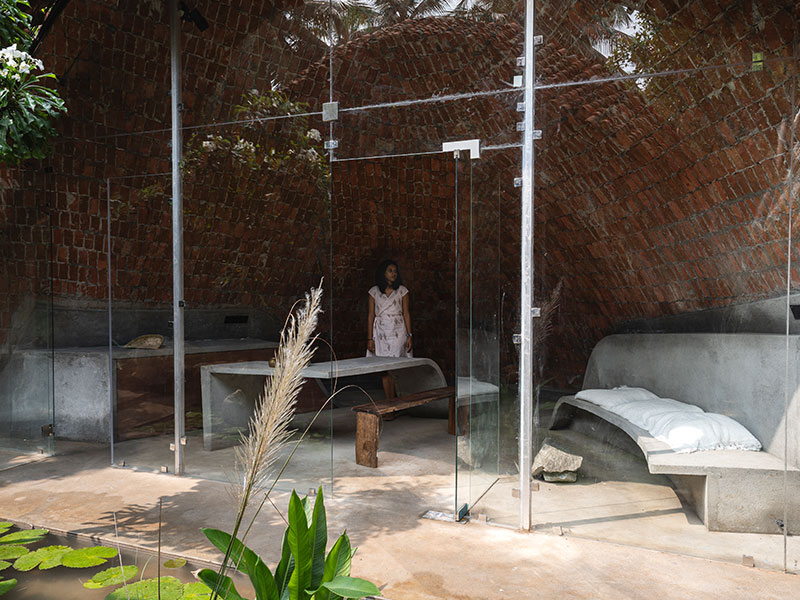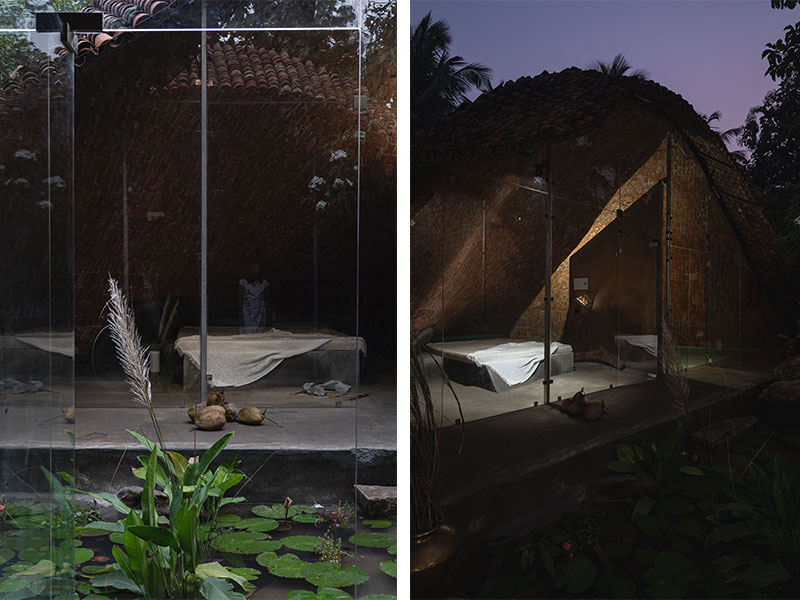Sithu kal – Small bricks of 3 layers have been done for the vault. These bricks are used for the madras terrace roof technique in South India which is now not being used. The community people who makes these bricks became unemployed. By using this material we make a community to work together bringing back the sustainability. Waste Broken tiles from factories have been reused for the 4th layer to avoid expensive waterproofing chemicals. Reused rods have been used for the frame works and supports of the vault during construction which has been further used for building the built in furniture like sofa, Breakfast counter, bed and also for the frame work of mudga (reused mudga tiles) roofing above. This mudga tiles has been sourced around 15 kms radius making it a locally available sustainable material.
Wood for furniture and door has been used from the waste wood which was also locally sourced. To enclose the twin vault, poured earth wall has been built where the mud has been collected from site. Throughout the process, my mentor Ar.Vinu Daniel guided, encouraging the new techniques and methods. The total construction period is 8 months where we stayed at site for the full construction period.
Experimenting different materials as their original forms makes the construction process interesting and the building becomes nature friendly and sustainable. The main ideology and concept of this farm house is to bring out a nature friendly building and using all locally available materials making it sustainable.













